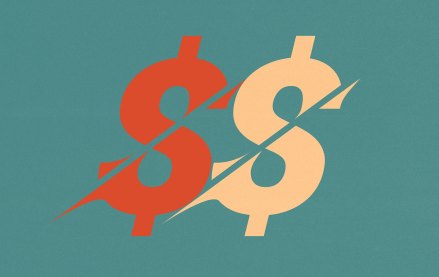
Marketing teams are prioritizing the creative refresh as they work to drive video and CTV campaign performance.
This process of updating ad creatives based on consumer engagement and response metrics differs from practices such as dynamic creative optimization, which focuses more on creating multiple variations of different ad units. The changes that come with a creative refresh are wider-ranging, such as swapping talent, changing music, starting times or updating the narrative. In contrast, DCO is typically limited to color, text, and messaging alterations.
As an approach to robust viewer and audience engagement, creative refresh combats ad fatigue. It helps to ensure video ads resonate with target audiences, which are crucial in the CTV environment.
In a recent webinar, MNTN discussed the nuances of the creative refresh process for CTV that advertisers must be mindful of as they plan their ad production and testing.
CTV challenges are demanding a creative-refresh response from marketers
One insight to highlight from the webinar, creative fatigue threatens to undercut brands and alienate viewers. Creative fatigue is broken down into two categories: Ad fatigue for the CTV viewer, when they see the same ad repeatedly in a short timeframe, and ad blindness for the web viewer when they selectively ignore banner ads and focus on other parts of a website.
An effective creative refresh and the performance metrics that result can combat those threats.
“Creative refreshes allow you to establish a data feedback loop, so you’re only looking to improve the performance of your creative,” said Alex Villa, associate vice president of customer success at QuickFrame by MNTN. “You’re essentially building on what you know is going to work or not work. Once you launch a creative, the clock starts ticking, and your effectiveness is slowly going to decrease.”
And because content can go stale at an ever-quickening pace, advertisers must be keeping an eye on metrics — refining and fine-tuning how they measure their CTV campaigns.
Identifying the indicators of a needed creative refresh
Identifying the metrics that will serve as markers for a creative refresh is essential. The right metrics are also likely to differ from campaign to campaign.
“No one campaign will have the same end goal,” said Villa. “Because of this, it’s important to define the primary KPI for each campaign and keep an eye on that to see when the creative may be starting to fatigue and be in need of a refresh.”
Ad fatigue leads to lowered performance, and performance goals dictate which metric to monitor to ensure ads aren’t losing steam. For example, the site visit rate is a good indicator for creative refreshes, and when rates dwindle, it’s likely a strong indicator that a creative refresh is the next needed step.
Time of year and the context of major annual seasonal events also drive the need for creative refresh.
“One of those times is the holidays, which are a high-risk, high-reward time on CTV,” said Brittany Haskins, director of customer success at MNTN. “The reward is that people are often indoors with their families streaming holiday content, but the risk is that the more time consumers spend streaming TV, the more likely they are to get burnt out on these ads. The increase in CTV watching makes a creative refresh more important than ever.”
Because CTV ads are not skippable, if completion rates decrease, people are bowing out before an ad finishes — meaning they’re taking an extra step to exit out of the entire program to disengage. In other words, they’re inconveniencing themselves to avoid being forced to watch the ad again — that’s a pretty big red flag.
While creative refresh often focuses on refreshing ads that have historically performed well and then see a dip in performance — rather than ads that never performed well, to begin with — those ads should also be analyzed to see what went wrong to avoid it happening again in the future.
“It’s just as important to see what’s working as what isn’t, so that you can know what not to do in the next round and what not to put your budget toward,” said Villa. “It goes back to that consistent data feedback loop that you’re getting which helps build out that library of content to pull from.”
How partnerships are driving creative refresh success
Many brands think the creative refresh process is complicated or overwhelming, but it doesn’t have to be that way. For many, part of the challenge around adoption and implementation can be addressed by finding a partner to help execute the approach.
“To unlock a steady stream of video and CTV content, we recommend finding a creative partner that can streamline video production for you,” said Haskins at MNTN. “To ensure you’re minimizing the risk of ad fatigue and never running an outdated video, find a partner that embraces a production approach that gives you plenty of options and allows you to test and refresh as needed.”
Working with a partner that allows for shooting multiple creatives simultaneously helps brands build up assets. They can then watch performance metrics and quickly iterate to combat creative fatigue.
“You should definitely walk away with way more content in the upfront to create a library of assets,” Villa added. “You’ll have more than you’ll need for those first videos, but that just means you’re planning and accounting for the variables that you may want to test.”
Advertisers need ways to effectively combat creative fatigue and deliver compelling videos to consumers. Knowing how to identify when creative has run its course and the types of metrics to track once a new creative is launched is helping advertisers stay on top of their campaigns and sustain audience attention and engagement as they continue to learn and iterate.
Sponsored By: MNTN
More from Digiday

The Disney-OpenAI deal and generative AI copyright concerns
This week’s Digiday Podcast delves into the copyright concerns and potential trademark issues surrounding brands’ use of generative AI tools, with Davis Wright Tremaine partner Rob Driscoll.

Why Pinterest wants to buy tvScientific, and what it signals for the CTV ads business
Corporate development sources estimate the deal valuation to be above $300 million, claiming tvScientific’s gross revenue is approximately $100 million.

Ad Tech Briefing: How the experts predict digital ad spend will pan out in 2026
Advertisers are placing greater emphasis on price and performance, often at the expense of transparency and control.





